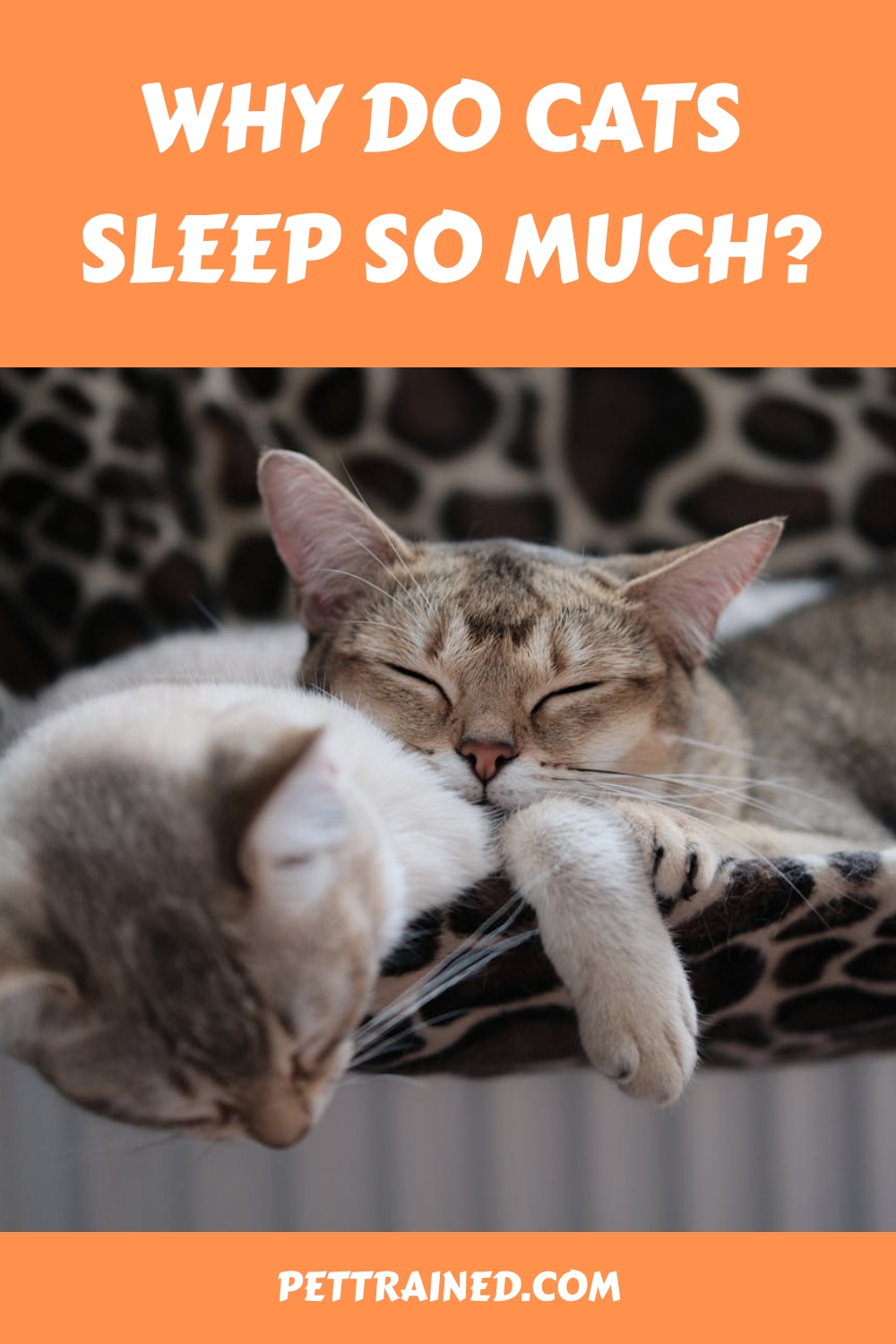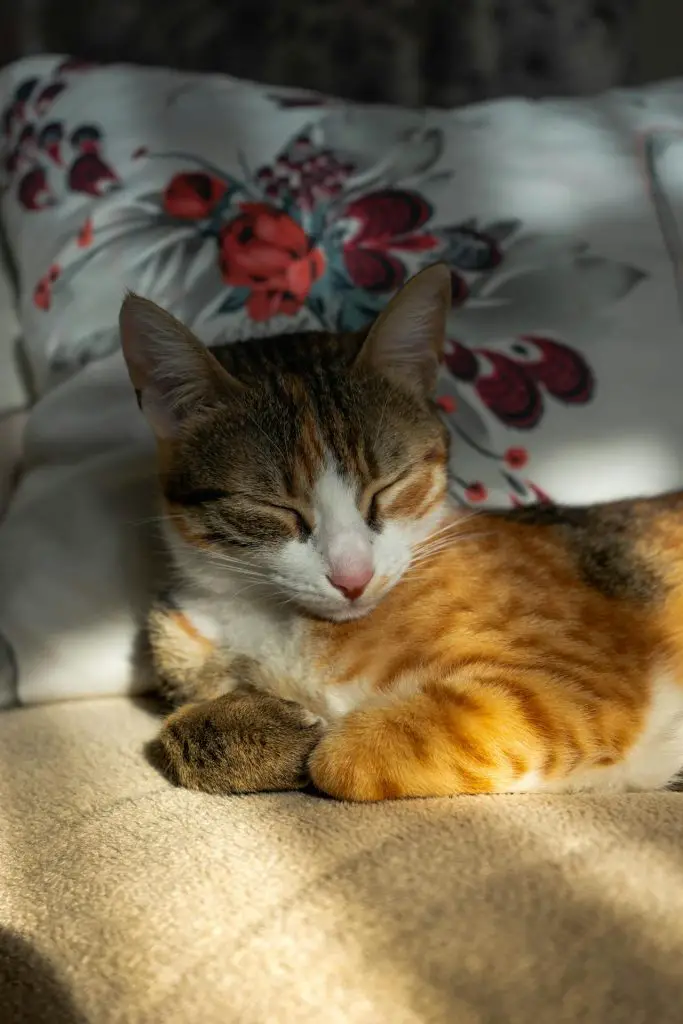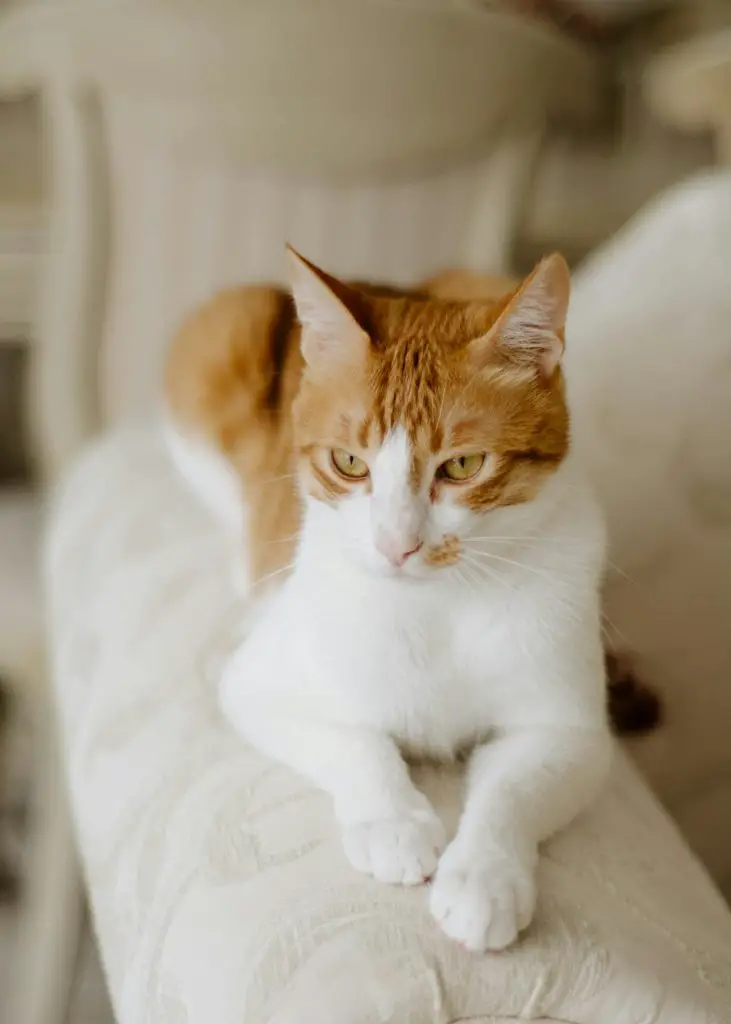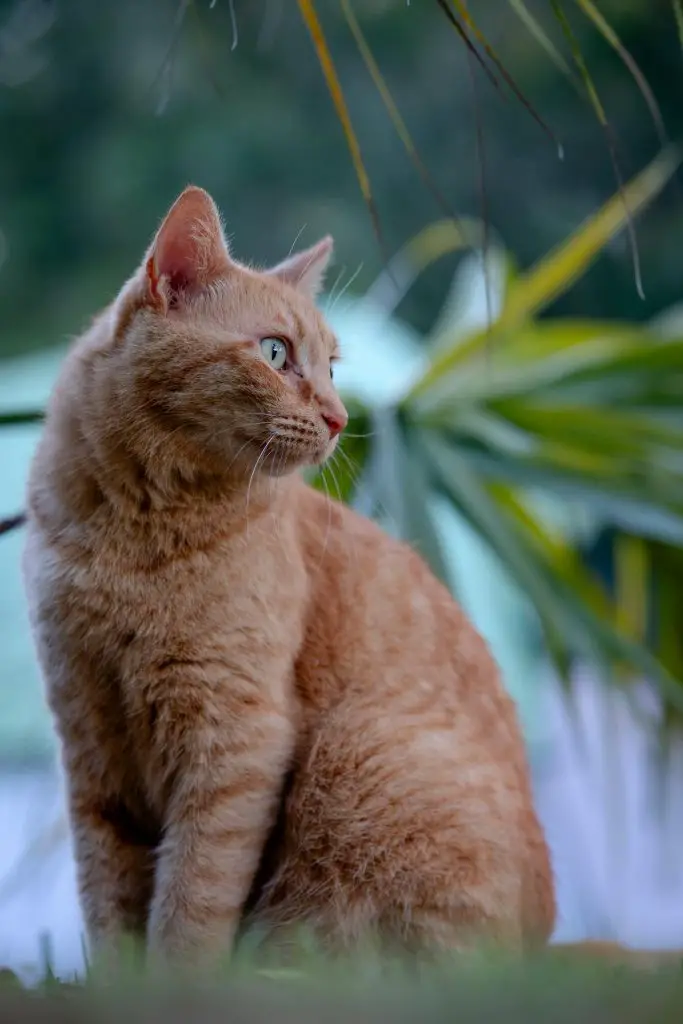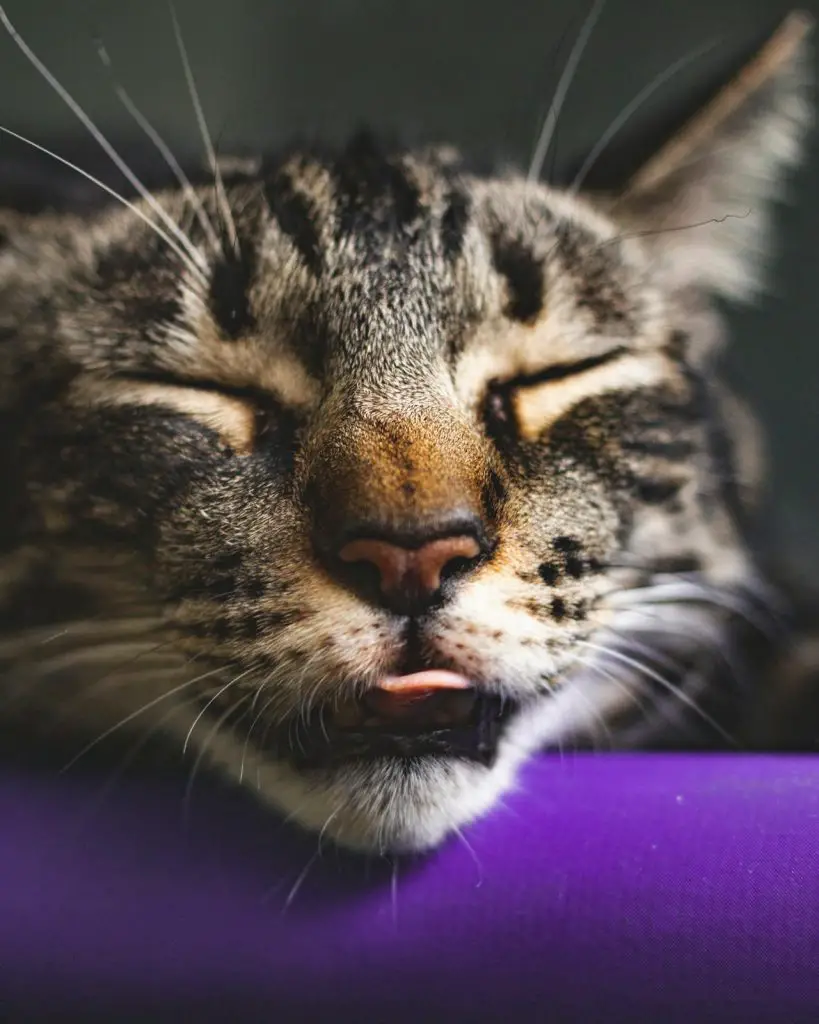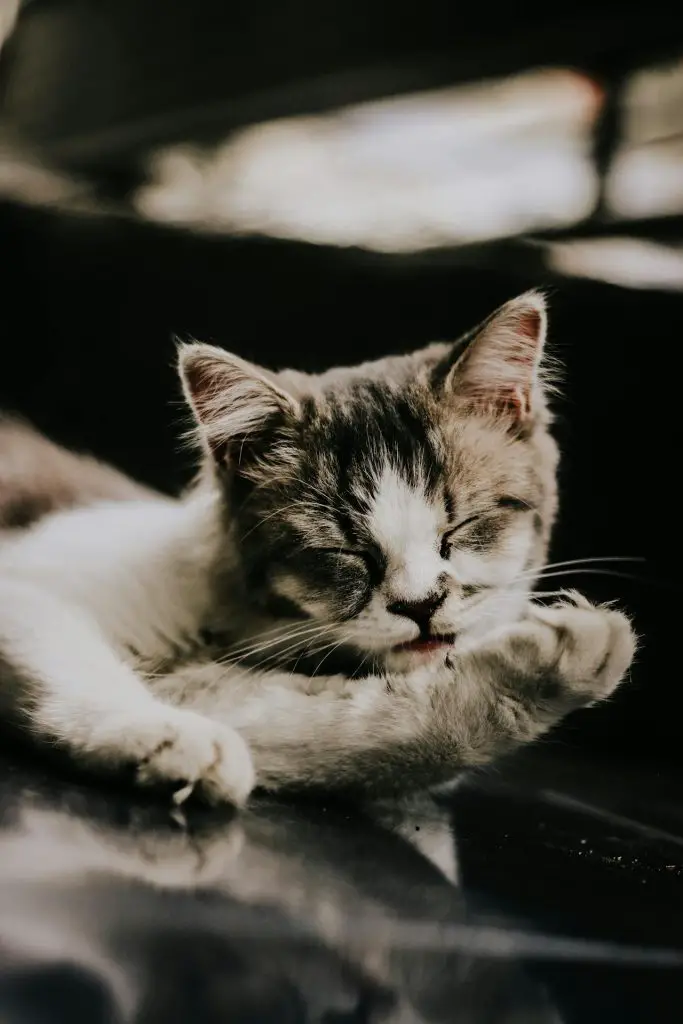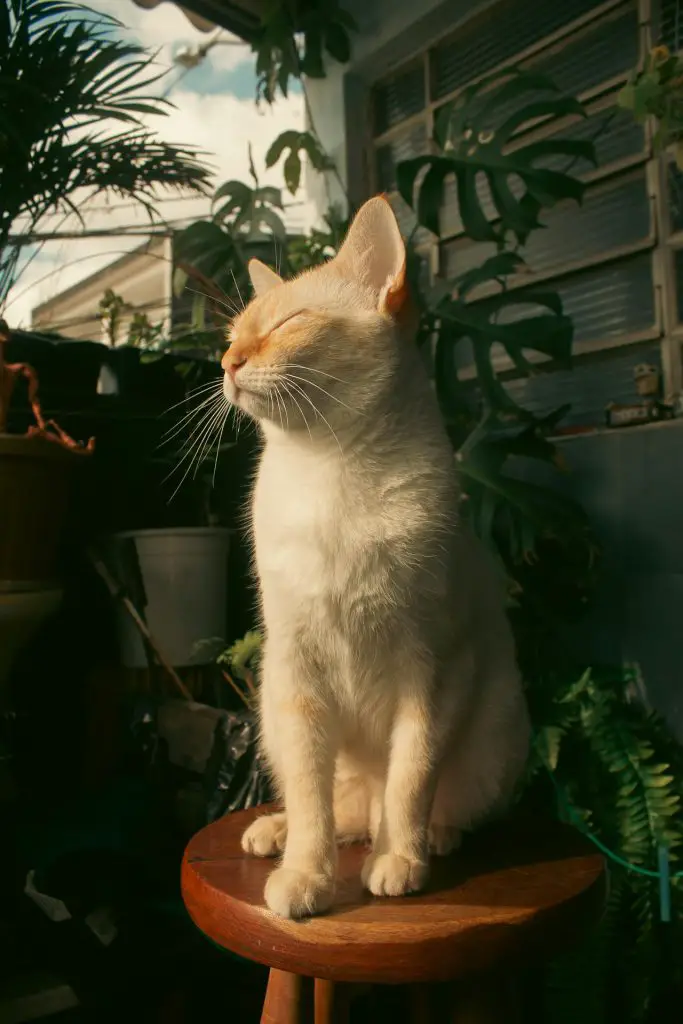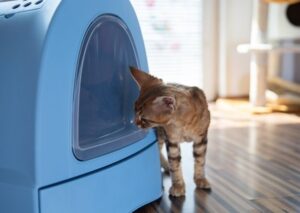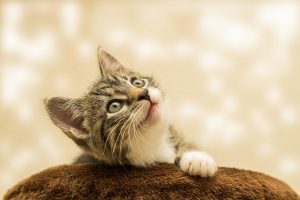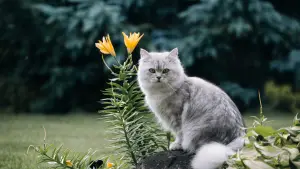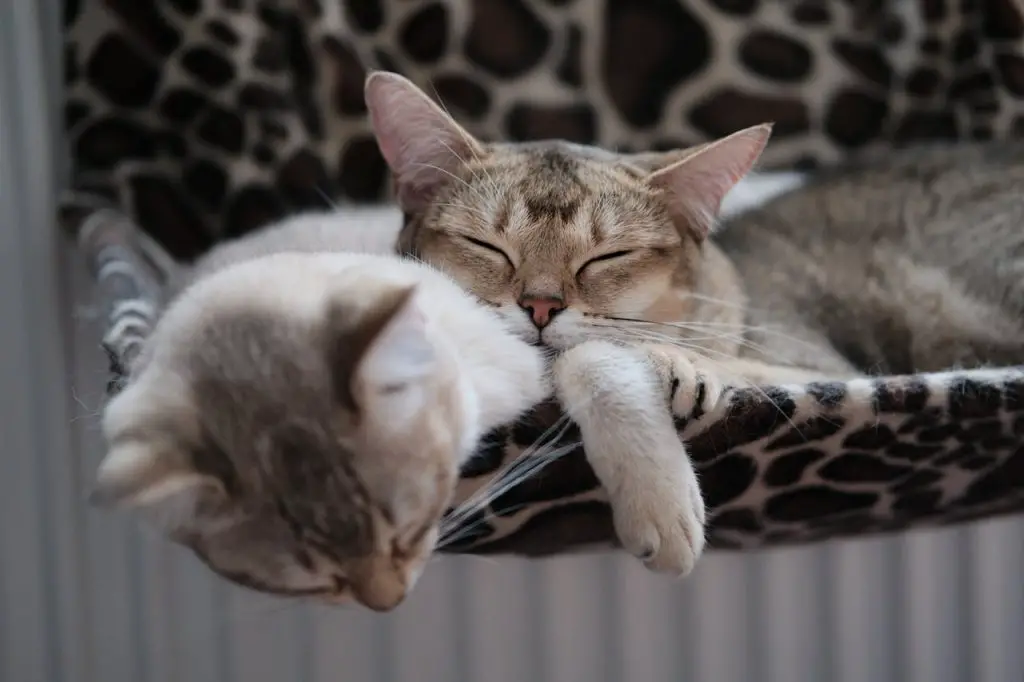
Just as Rip Van Winkle needed his long winter’s nap, your feline friend seems to require an awful lot of shut-eye – but why? You’ve probably noticed that your cat spends a significant portion of the day snoozing, and it’s not just because they’re bored or lazy. The truth is, cats are naturally programmed to sleep a lot, and it’s a behavior that’s deeply ingrained in their physiology. But what drives this need for so much sleep, and is it normal for your cat to be spending up to 16 hours a day in dreamland?
Table of Contents
Evolutionary History of Sleep Patterns
You may find it surprising that the evolutionary history of sleep patterns in cats is closely tied to their ancestors’ lifestyle as predators in the wild.
As you explore the sleep architecture of domestic cats, you’ll notice that their unique patterns are shaped by their ancestral traits.
In the wild, predators like big cats need to conserve energy between hunting and stalking prey, which can be an energetically costly activity.
You’ll see that your feline friend’s sleep patterns reflect this adaptation, with short periods of deep sleep followed by brief periods of wakefulness.
This post contains affiliate links. However all the information provided on this site are my own honest opinions. See more in Disclaimer.
This polyphasic sleep pattern allows them to recharge and remain alert to potential threats or prey.
Even though your domestic cat may not need to hunt for food, they’ve retained this sleep architecture as an ancestral trait.
As a result, they spend a significant amount of time sleeping, with some cats logging up to 16 hours of sleep per day.
Feline Physiology and Sleep Needs
Feline physiology plays a crucial role in determining the sleep needs of domestic cats, with factors such as brain structure, hormone regulation, and metabolic rate influencing the amount of sleep they require.
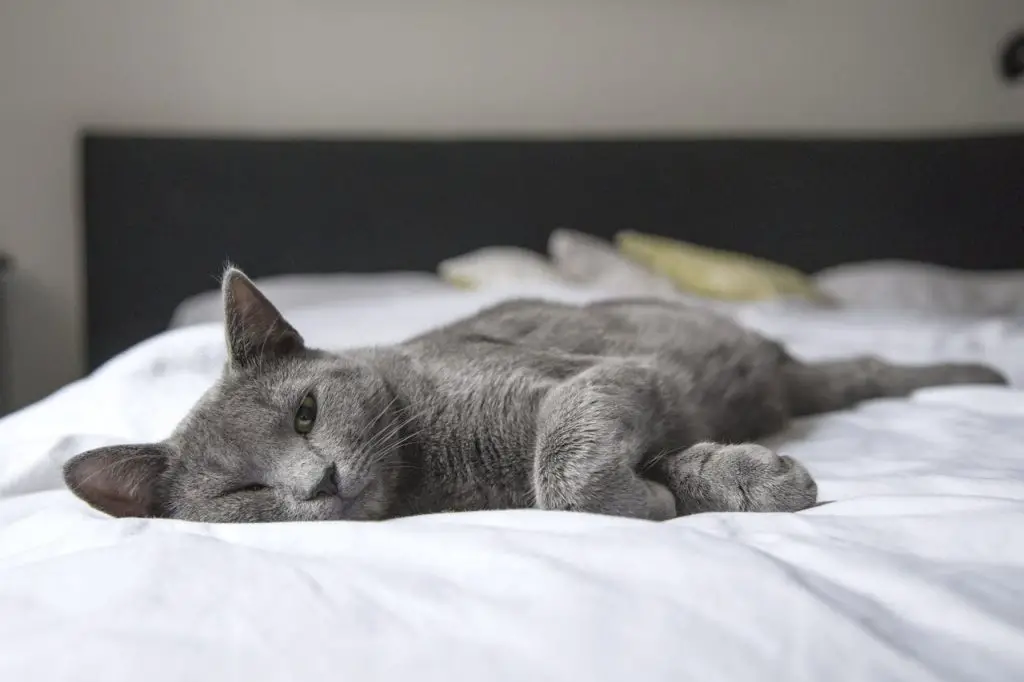
You’ll find that a cat’s brain is wired to conserve energy, which affects their sleep mechanisms. Their small brain-to-body mass ratio means they’re naturally inclined to snooze a lot.
You should also consider feline metabolism when understanding their sleep needs. Cats are obligate carnivores, meaning they primarily feed on high-protein meat.
As a result, their metabolism is designed to optimize energy conservation between hunting and feeding. This unique metabolic adaptation makes them sleep more frequently to conserve energy.
Your cat’s hormone regulation also comes into play. Hormones like melatonin and serotonin help regulate their sleep-wake cycles.
Understanding these physiological factors will give you insight into why your cat sleeps so much.
By recognizing how their biology influences their behavior, you’ll better understand their needs and guarantee they’re getting the rest they require.
This knowledge will help you tailor your care to meet their specific sleep needs.
Sleep Cycles in Cats
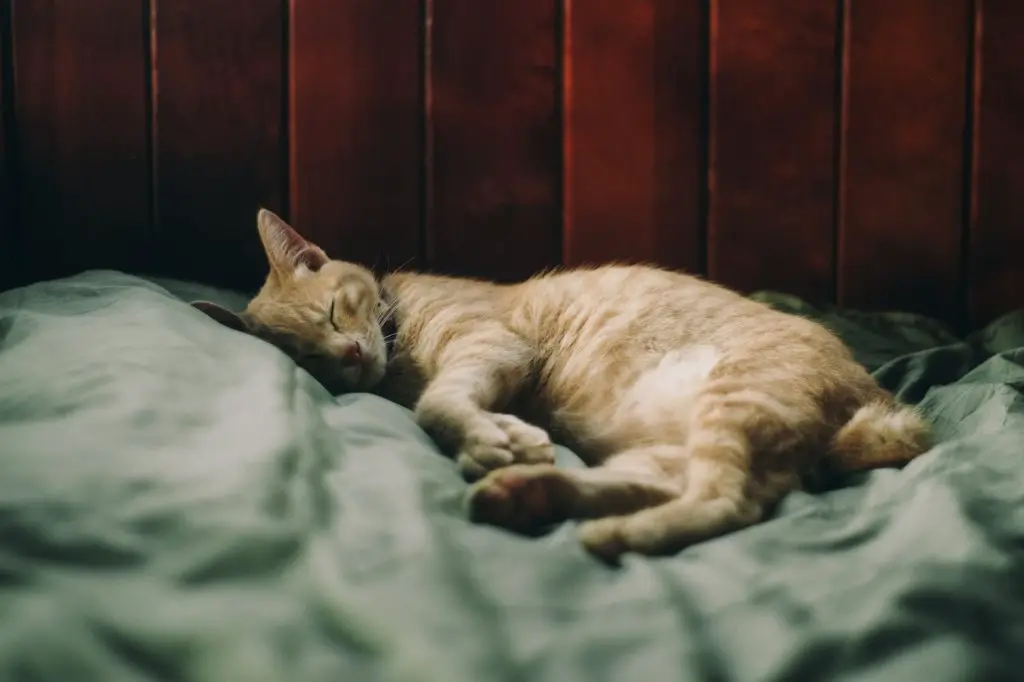
Building on the understanding of feline physiology and its influence on sleep needs, a closer examination of sleep cycles in cats reveals a unique pattern of rest and wakefulness that differs markedly from humans and other animals.
You’ll notice that your feline friend spends a significant amount of time in light sleep stages, which allows them to wake up quickly in response to potential threats or prey.
This is in contrast to humans, who experience a more even distribution of light and deep sleep stages.
Cats also experience shorter REM sleep cycles, which are the stages where dreams occur and memories are consolidated.
While humans typically experience 90-minute REM sleep cycles, cats experience shorter cycles of around 30 minutes.
This allows them to wake up more frequently and easily, making them well-suited to a life of hunting and self-defense.
Patterns of Wild Cat Behavior
You may wonder how your domestic cat’s sleep patterns compare to those of their wild ancestors.
Studying patterns of wild cat behavior, you’ll notice that many species, such as lions and tigers, are nocturnal hunters, meaning they do most of their hunting at night.
Hunting at Night
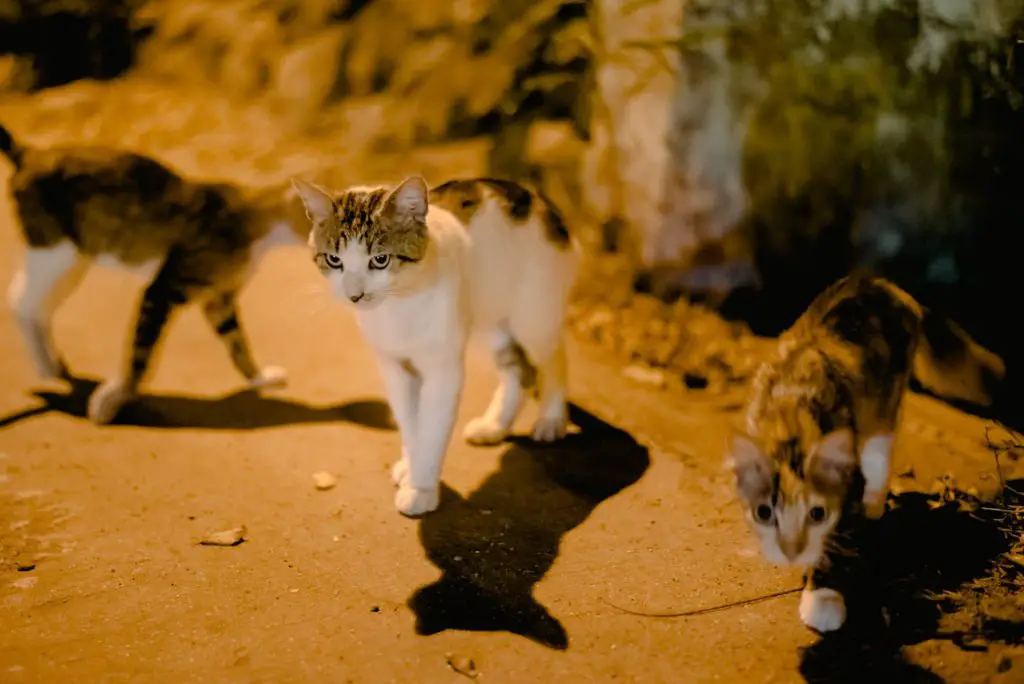
Most wild cats are nocturnal predators, meaning they do the majority of their hunting at night, when their exceptional low-light vision and acute hearing give them a distinct advantage over their prey.
As you explore the world of these skilled hunters, you’ll notice that their nocturnal instincts play an essential role in their survival.
You see, many of their prey species are diurnal, meaning they’re most active during the day, and adjust their behavior at night to avoid predators.
However, this change in prey behavior actually makes them more vulnerable to nocturnal predators like wild cats.
You’ll find that a wild cat’s acute hearing and exceptional low-light vision allow them to stalk their prey undetected, giving them the upper hand in the hunt.
Their ability to adapt to their surroundings and adjust their hunting strategy according to their prey’s behavior is a reflection of their highly developed nocturnal instincts.
Energy Conservation Methods
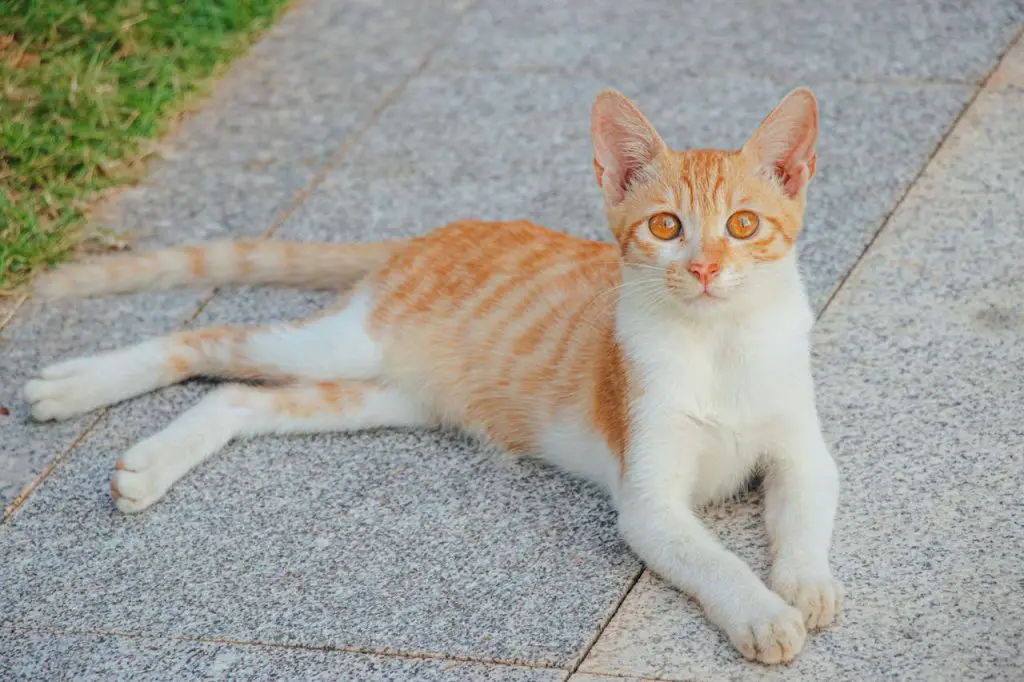
Following a night of hunting, wild cats conserve energy by adopting unique behavioral patterns that allow them to recover from the physical demands of stalking and capturing prey.
You’ll notice that they focus on energy efficiency by minimizing their movements and staying still for extended periods.
This strategy is essential for their survival, as it helps them conserve energy between hunting sessions.
By reducing their activity levels, they can replenish their energy reserves, which is important for their next hunt.
These survival strategies are honed to guarantee that wild cats can thrive in their environments.
For example, they’ll often retreat to sheltered spots, such as thick vegetation or rocky outcrops, to rest and hide from potential predators.
By doing so, they can avoid unnecessary energy expenditure and maintain their physical condition.
Daytime Rest Habits
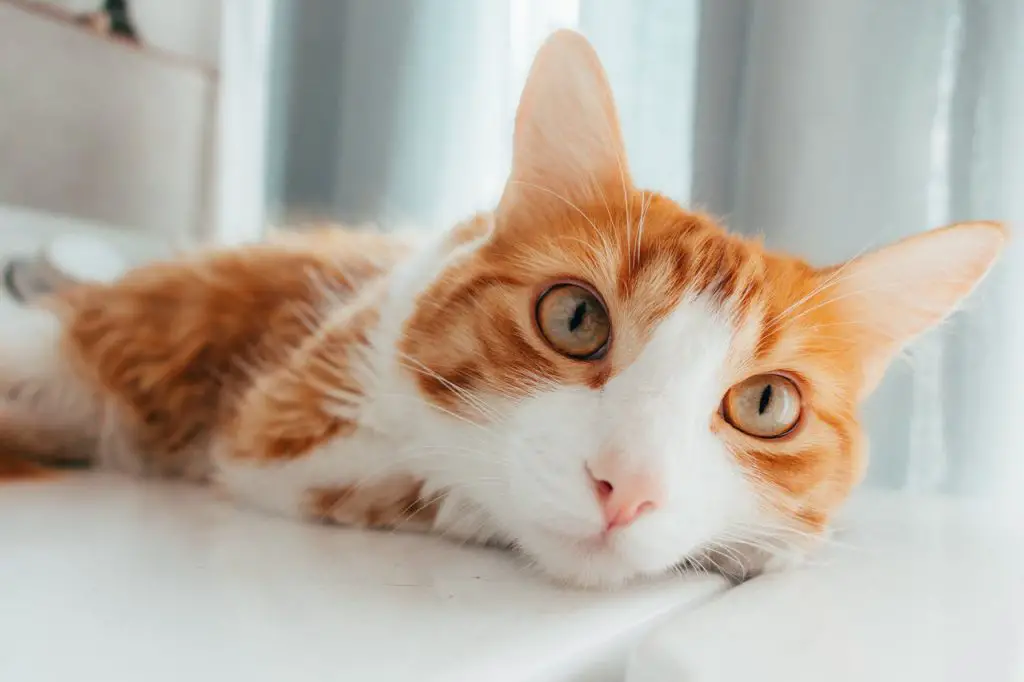
Building on the energy conservation methods employed by wild cats, their daytime rest habits reveal a range of behavioral adaptations that enable them to optimize their rest periods and cope with the demands of their environment.
You’ll notice that wild cats have a unique way of balancing rest and alertness, allowing them to conserve energy while remaining vigilant for potential threats.
Some key characteristics of wild cats’ daytime rest habits include:
- Daytime napping: short periods of rest, often in a shaded or hidden area, to avoid detection by predators
- Sunbathing spots: carefully selected locations that provide warmth and comfort, often with a clear view of the surroundings
- Elevated resting sites: tree branches, rocks, or other raised areas that offer a vantage point and protection from potential threats
- Concealed resting sites: hidden areas, such as thick vegetation or underground burrows, that provide seclusion and protection
Energy Conservation Techniques
You’re probably wondering how cats conserve energy, given their remarkably high sleep requirements.
As you explore energy conservation techniques, you’ll notice that cats reduce physical activity to minimize energy expenditure, which is essential for their survival.
Reducing Physical Activity
Nearly all cats employ various energy conservation techniques to reduce physical activity, minimizing the amount of energy expended on bodily functions other than essential maintenance and restoration.
As a cat owner, you may have noticed that your feline friend spends a significant amount of time lounging around the house, seemingly doing nothing.
This sedentary lifestyle is a deliberate choice, allowing your cat to conserve energy in an indoor environment where food is readily available and predators are scarce.
Some common techniques your cat uses to reduce physical activity include:
- Sleeping or resting for extended periods to minimize energy expenditure
- Reducing movement and locomotion to conserve energy
- Avoiding strenuous activities, such as hunting or playing, unless absolutely necessary
- Using furniture or other objects to support their body and reduce muscle strain
Adaptive Rest Patterns
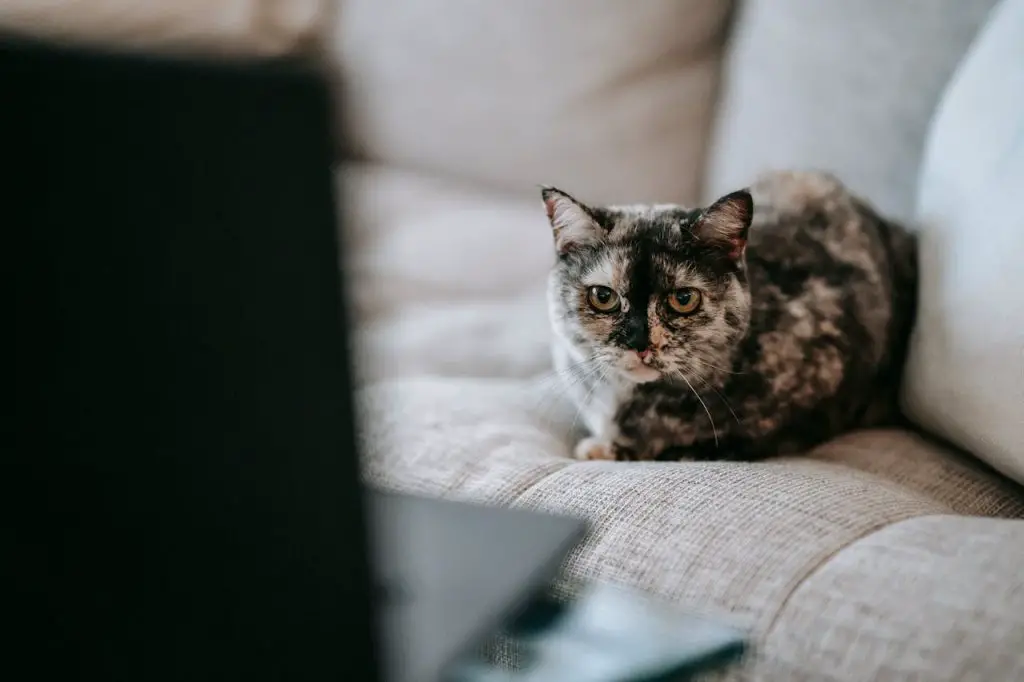
Within the feline world, adaptive rest patterns serve as a critical component of energy conservation, allowing your cat to allocate resources effectively and maintain ideal bodily function.
By modifying their sleep environments and exhibiting behavioral adaptations, your cat can enhance energy expenditure and recover from physical activity.
You may notice that your cat prefers to sleep in warm, sheltered locations, such as the top of a cat tree or a cozy patch of sunlight.
This strategic selection of sleep environments enables your cat to minimize heat loss and conserve energy.
Behavioral adaptations, including reduced physical activity and altered sleep schedules, also contribute to energy conservation.
For example, your cat may adjust its sleep patterns to coincide with periods of reduced prey availability or harsh environmental conditions, allowing it to conserve energy and maintain bodily function.
These adaptive rest patterns have evolved to support your cat’s survival and are essential for maintaining peak health.
Impact of Age on Sleep
The age of a cat considerably influences its sleep patterns, with kittens sleeping up to 20 hours a day, while adult cats typically spend around 12-16 hours per day snoozing.
As a cat owner, you’ll notice the change in your cat’s sleep habits as it matures. Here are key aspects to take into account regarding your cat’s age and sleep:
- Kittens (0-6 months) sleep a lot due to their high energy expenditure and rapid growth.
- Adult cats (1-7 years) tend to establish a regular sleep-wake cycle, with most sleep occurring at night.
- Senior cats (8-15 years) often sleep more during the day and less at night, which can be attributed to declining physical and cognitive abilities.
- Geriatric cats (16+ years) may exhibit increased sleeping due to reduced mobility and sensory impairments.
Health Factors Influencing Sleep
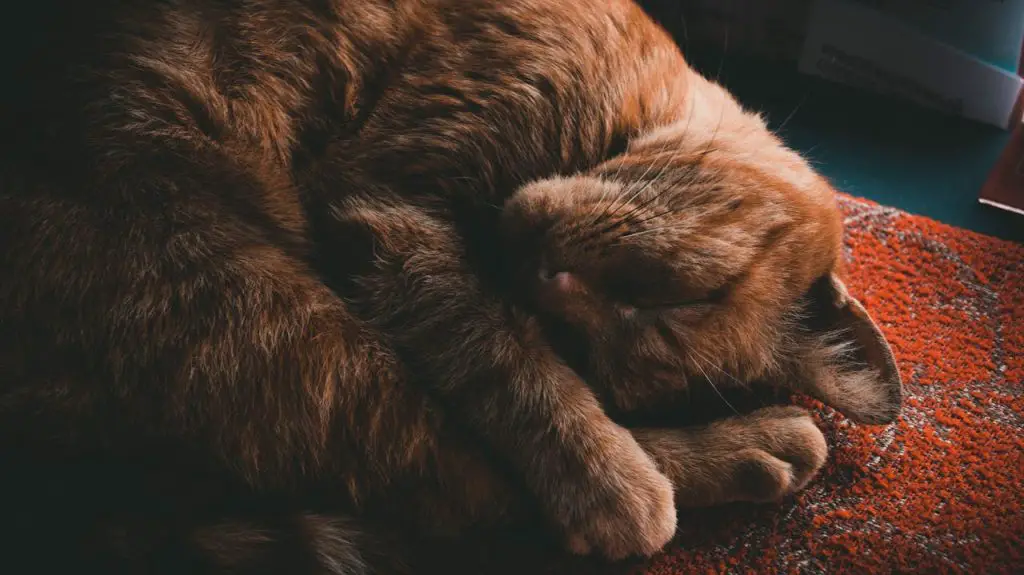
Throughout a cat’s life, various health issues can greatly affect its sleep patterns, making it crucial for you to monitor and address any medical conditions to guarantee your cat’s restful and rejuvenating sleep.
As a cat owner, you should be aware of common health issues that can impact your cat’s sleep, such as chronic pain, arthritis, and sensory decline.
Additionally, sleep disorders like insomnia, sleep apnea, and restless leg syndrome can also affect your cat’s sleep quality.
| Health Issue | Effect on Sleep |
|---|---|
| Chronic Pain | Increased sleep duration, restlessness |
| Arthritis | Difficulty settling down, frequent waking |
| Sensory Decline | Disrupted sleep-wake cycle, insomnia |
| Insomnia | Difficulty falling asleep, staying asleep |
| Environmental Influences | Changes in sleep patterns due to noise, stress |
It’s essential to consult with a veterinarian to identify any underlying health issues that may be influencing your cat’s sleep patterns.
By addressing these issues, you can help your cat achieve better sleep quality and overall well-being.
Moreover, creating a sleep-conducive environment by minimizing environmental influences can also promote healthy sleep habits for your feline companion.
Frequent Questions
“You’re probably envisioning a restful night’s sleep, undisturbed by your cat’s midnight antics. To train your cat, establish a consistent sleep environment and nighttime habits, gradually adjusting their routine to coincide with yours.”
You notice your cat prefers sleeping on your bed or clothing due to the warmth and scent comfort these surfaces provide, mimicking the security of a mother’s presence, making them feel safe and relaxed.
“As you navigate the mystifying world of cat behavior, you’ll discover that cats don’t sleepwalk or have nightmares like humans do. Their unique sleep patterns involve short, light cycles, allowing them to rest while remaining semi-alert.”
You’re likely wondering if cats can see and hear while they’re sleeping. Research suggests that cats’ sleeping senses remain partially active, allowing for feline awareness of their surroundings, but the extent of this awareness is still unclear.
As you observe a sleeping cat, its twitching legs are like synchronized swimmers, symbolizing the brain’s activity. During REM sleep stages, cats exhibit dream behavior, processing memories and emotions, causing involuntary leg movements, and possibly, imaginary prey chases.
Final Thoughts
You’ve explored the reasons behind your cat’s extensive sleep patterns, rooted in their evolutionary history as predators and unique physiology.
Notably, domestic cats spend up to 16 hours a day sleeping, reflecting their ancestral traits despite reduced hunting needs.
This means that your cat is sleeping for approximately 60% of its day, highlighting the essential role rest plays in maintaining their overall health and well-being.
Their brain structure and metabolism demand this extensive rest.
